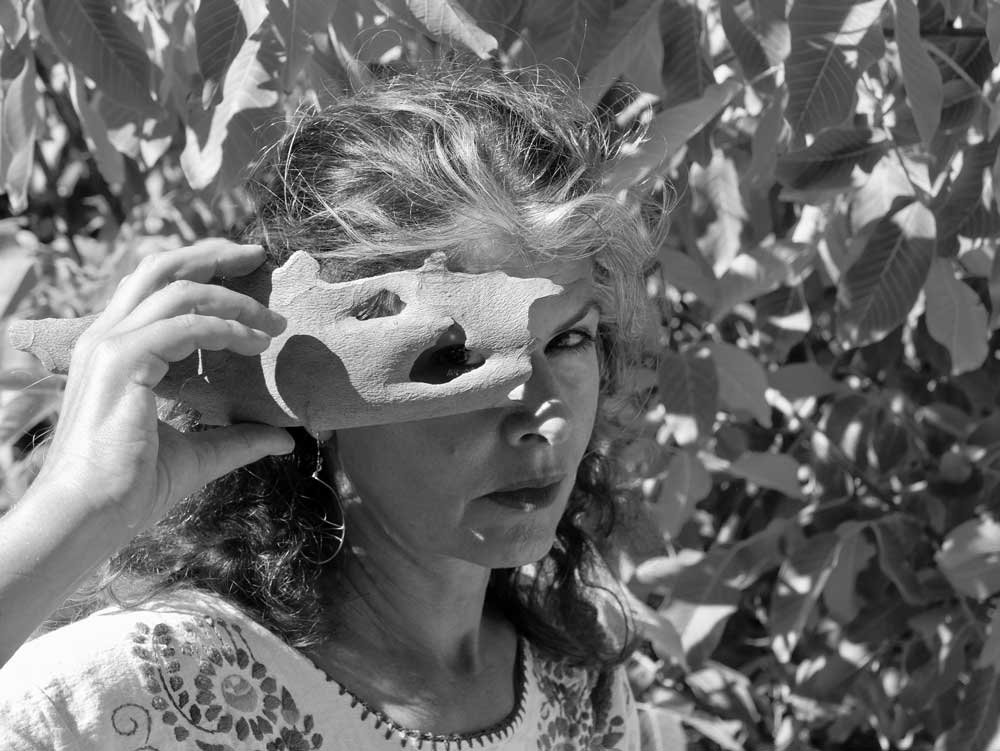
ABOUT
More Facts
Sikelianos’s writing, frequently saturated with delight in the natural world and a layperson’s study of biology, is dedicated to turning the kaleidoscope for more angles on what being alive looks and feels like. Edge-play manifests in her collaborative work with musicians, filmmakers, and visual artists, including Mel Chin, Ed Bowes, Courtney Stephens, and Philip Glass.
She has translated three books from the French, by Jacques Roubaud, Sabine Macher, and Mohamed Leftah, and her own work has been translated into over a dozen languages, with seven books in French and two in Greek.
Her honors include two National Endowment for the Arts Fellowships and two Gertrude Stein Awards, a Fulbright, a Seeger Fellowship at Princeton, a New York Foundation for the Arts Award, the James D. Phelan award, and residencies at Ucross, Bogliasco, Yaddo, and Djerassi. Her work has been anthologized in many places: The Norton Anthology of Postmodern Poetry, Norton’s American Hybrid, Satellite Convulsions: Poems from Tin House, A Best of Fence, Out of Everywhere: Linguistically Innovative Women Poets in North American and the UK, etc; and has appeared in the New York Times Magazine, BOMB, Conjunctions, Gulf Coast, The Kenyon Review, and more. She has participated in international poetry festivals, including the Centre National du Livre’s Belles Etrangères, the Days of Poetry and Wine in Slovenia, the Barcelona Poetry Festival, Masnaa in Morocco, A Voz Alta in Mexico City, Metropole Bleu in Montreal, and Poetry International in Greece.
Dedicated to the many ways poetry manifests in communities, Sikelianos has taught workshops in public schools, homeless shelters, and prisons. She now teaches Literary Arts at Brown University and is frequently on guest faculty for the Naropa Summer Writing Program. The great granddaughter of Greek poet Angelos Sikelianos and theater director Eva Palmer Sikelianos, she shares her days with the novelist Laird Hunt and their daughter Eva Grace.
A Poetics for Now
Sponges invented collagen, giving us the gift of skin, and our bodies are a moving memory of the first chemical kisses before solids began to clump together and form this planet. We exist alongside these elements and creatures with whom we share a mosaic of structural and genomic remnants—our deep family. My work moves among these planetary, cultural, and familial inheritances and the present and the futures they imagine.
I have been exploring ecopoetics for a few decades now. The creatural polyphonies we live among are a major influence, a tissue of sound and movement in the whole field. That includes contending with and honoring the wild human family I was born into. Inspired by intertidal ocean zones, where animals adapt to live both underwater as well as under the beating sun, I try to prod the boundaries of how poems can exist. Some animals’ life-stages are entirely divergent in form, as in caterpillar-to-butterfly metamorphosis. And there is the biological chimera (which is sometimes a human carrying the remnants of a twin) containing several beings in its genetic material alongside the ancient chimera, an animal made up of very different parts. We listen to these forms as unfolding possibilities for the work’s shapes. At the chimeric junctures of ancestral and biological lineages, the wild roots and possibilities of our past, present, and futures sprout and thrive. The book itself is an installation site, a primer on possibility, an experiment. The question being tested is: how to live. How to live with environmental, political, and personal grief, how to live in relation, how to activate radical joy. The question is: how to love. How to love more. How to liberate the mind in forms living in or beyond or surrounded by language.
Some Story
Sikelianos grew up in Section 8 housing, on foodstamps, in a post-Bohemian context, close to the bone, in a scattered family of nonconformists and misfits. All of this left a lot of room for freedom to roam. At 15, she turned down guitar lessons from John Lee Hooker, who her mother was dating. At 19, she left the U.S with funds saved from various jobs and a student loan, and spent the next year and a half traveling by rail, boat, bus, plane and thumb through Greece, Turkey, Palestine/Israel, and across Africa (from Egypt to Tanzania), landing in Paris, where she lived, worked, and studied for a year. She next took up her studies of poetry’s left hand path at Naropa, where her many teachers included Anne Waldman, Alice Notley, Allen Ginsberg, Amiri Baraka, Bernadette Mayer, Diane di Prima, and Joanne Kyger. Alice cried while teaching Williams’ “Asphodel, That Greeny Flower,” Susan Howe told her to try more space on the page, Amiri encouraged her, and Allen stepped out of a hot tub naked at a party. This was all part of her poetry education.